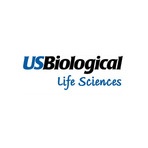
 Suppliers
Suppliers  United States Biological
United States Biological

Lens proteins consist almost entirely of Crystallins (about 95%). Crystallins are also found in vertebrate skeletal muscle tissue. In the lens, their...

a-b-Crystalline is a lens protein, which has some homology with the small heat shock proteins. It is expressed in tissues such as skeletal muscle, cardiac...

Crystallin AB (CryAB) is a developmentally regulated small heat shock protein known to protect cells from stress damage. It may also play an important role...

Applications: Suitable for use in ELISA and Western Blot. Other applications not tested. Recommended Dilution: ELISA: 1:1000-1:2000 Western Blot:...

Cryptosporidium is one of several species that cause cryptosporidiosis; a disease affecting the intestines of mammals which is spread through the faecal-oral...

The genome of Cryptosporidium sp. is one of the smallest among unicellular eukaryotic organisms. Cryptosporidium is one of several species that cause...

Cryptosporidium is a small protozoan parasite, measuring about 3-5 microm. It lives on (or just under) the surface of the cells lining the small intestine,...

C. parvum is one of several species that cause cryptosporidiosis; a disease affecting the intestines of mammals and is spread through the fecal-oral route....

Applications: Suitable for use in Immunofluorescence and ELISA. Other applications not tested. Recommended Dilution: Optimal dilutions to be determined by...

Applications: Suitable for use in Western Blot. Other applications not tested. Recommended Dilution: Optimal dilutions to be determined by the researcher....

Applications: Suitable for use in ELISA. Other applications not tested. Recommended Dilution: Optimal dilutions to be determined by the researcher. Storage...

Applications: Suitable for use in ELISA. Other applications not tested. Recommended Dilution: Optimal dilutions to be determined by the researcher. Storage...

Applications: Suitable for use in ELISA. Other applications not tested. Recommended Dilution: Optimal dilutions to be determined by the researcher. Storage...

CRIM1 may participate in CNS development by interacting with growth factors involved in motor neuron differentiation and survival. It also has a potential...

Applications: Suitable for use in Western Blotting. Other applications not tested. Recommended Dilution: Western Blotting: 1:1000-1:2000 Optimal dilutions to...

CrkL is a 39kD adaptor protein, originally cloned in proximity to the BCR gene on chromosome 22, which has a key regulatory role in hematopoietic cells. CrkL...

CrkL is a 39kD adaptor protein, originally cloned in proximity to the BCR gene on chromosome 22, which has a key regulatory role in hematopoietic cells. CrkL...

CRKL is a 39kD adaptor protein with one SH2 and two SH3 binding domains. CRKL is the major protein which is tyrosine phosphorylated in response to BCR/ABL...

CrkL is a 39kD adaptor protein, originally cloned in proximity to the BCR gene on chromosome 22, which has a key regulatory role in hematopoietic cells. CrkL...

CRKL is a 33kDa adaptor protein which has been shown to activate the RAS and JUN kinase signalling pathways and transforms fibroblasts in a RAS dependent...